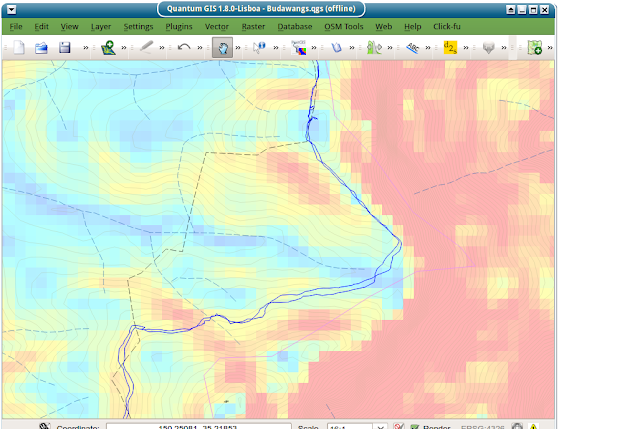Skill and Judgement
A formed walking track made through the bush is an artistic work in Australia, and hence subject to copyright, because the creativity, skill and judgement exercised in selecting its route makes it a sculpture or engraving, and is a work of artistic craftsmanship.In creating a walking track, one doesn't simply follow a bearing from start to end point, but rather actively chooses a route over terrain. The choices made by a walker are conditioned by the topography, surface area, ground cover and a desire to arrive at certain points of interest.
The formation of a bush track satisfies all of the criteria enunciated by the Federal Court in the Sensis Case (Telstra Corporation Limited v Phone Directories Company Pty Ltd [2010] FCA 44 (8 February 2010)): the expenditure of “independent intellectual effort” involving a “creative spark” and the exercise of a requisite “skill and judgment”.
Such works could be considered Land Art, and many famous examples of such works exist.
Case: Folly Point.
We can consider a specific case, the formation of the Folly Point track in the Budawangs. John Evans gives an excellent account of walking the track in 2010, and includes maps, kml tracks, photos and videos.At the end-point of Folly Point track there's a pass named Watsons Pass leading from the cliff line into a deep gorge. The pass was named for Colin Watson, who is held to have discovered it. Colin Watson says, in his autobiography (pp 163):
I decided to explore farther below Folly Point and to start cutting a track to this point with machetes. Glen Wilson, Bruce Ingram and Howard Dries left on Bank Holiday, 1962, weekend and took a day exploring the best way out to Folly Point, a distance of about five miles.We are given the date of creation, the authors' names, and the statement that they had to explore to find the "best way" for the track to be cut. This is a creative work requiring substantial skill and judgement, which is further proven by the fact that an entirely novel and original pass was found as part of the exploration.
State Copyright Claims
The Corang topographic map sheet contains a reproduction of the Folly Point track, over a claim of copyright by the State of NSW.I think, in view of the Sensis case, any claim to owning the copyright of Watson's track would have to fail in view of the clearly demonstrable provenance of the work. The mere compilation of the track does not confer on the publisher of the map any copyright recognised by the law of the Commonwealth.
Tracks of Ancient Provenance
Most of the tracks in the Budawangs can be traced back through the literature to Aboriginal walking tracks, bridal paths (many of which followed the Aboriginal tracks,) roads formed by timber getters in the early 1900s (and before.)In none of these can any authorship be asserted by the map making authority on behalf of the state.
The Cartographer's Art
While there is, no doubt, an art of cartography, and while I believe that a great deal of skill and judgement may be exercised in the recognition and recording of geomorphological features such as cliff lines and swamps, and land cover, it is certain that a map maker cannot claim authorship of all features recorded on a map they draw - even more so when the systems used to produce the map are "designed to limit originality, not provide for it" (Federal Court Judgement, above.)When we subtract (from a topo map) contours (derived from DEM models) water features (derived from DEM and hydrological models) tracks and trails (created by someone other than the map maker) there's not a whole lot left.




